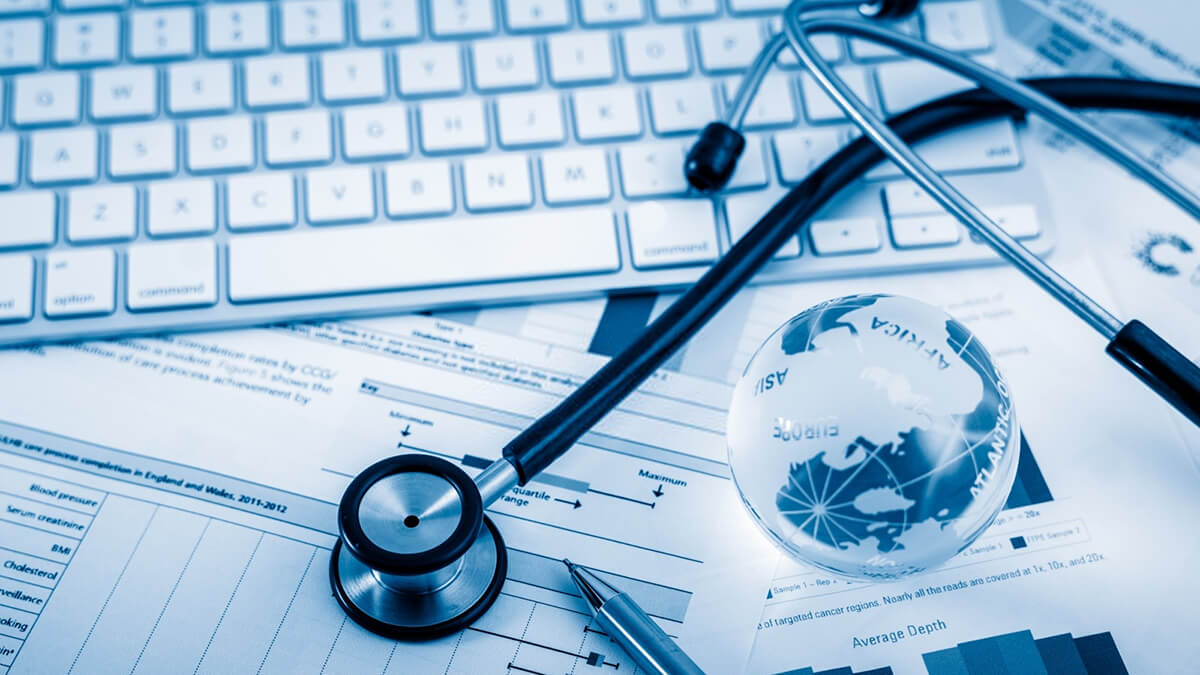Why Medical Administration is Vital for Smooth Healthcare Workflow
Why Medical Administration is Vital for Smooth Healthcare Workflow
Blog Article
Ideal Practices in Medical Administration for Improving Performance and Lowering Prices
In the ever-evolving landscape of healthcare, the search of finest techniques in medical management is critical for boosting effectiveness and suppressing expenditures. By integrating advanced modern technologies such as electronic health and wellness records and telemedicine, healthcare providers can streamline procedures and improve patient care. Nonetheless, technology alone is not a panacea; enhancing resource allocation and fostering collaborative interaction amongst treatment groups are just as vital (medical administration). As companies strive to stabilize high quality and cost, what techniques should be prioritized to achieve these dual goals? The solution to these inquiries hold the key to a much more lasting health care system.
Leveraging Advanced Technology
In today's swiftly developing medical care landscape, leveraging advanced technology is no more optional yet essential for efficient medical management. The assimilation of electronic services into healthcare systems has actually transformed the way centers operate, simplifying processes and improving patient treatment. Electronic Health And Wellness Records (EHRs) are essential, providing detailed individual data that can be accessed immediately by authorized workers, thus reducing redundancy and minimizing errors. By centralizing individual information, EHRs get rid of the requirement for difficult documentation and promote smooth communication among medical care suppliers.
Telemedicine is one more technical advancement that has actually reinvented patient communication. It uses convenience for both individuals and healthcare professionals by enabling remote consultations, which can minimize the requirement for in-person check outs and maximize visit scheduling. In addition, telehealth systems can prolong health care accessibility to rural or underserved locations, connecting gaps in treatment shipment.
In addition, making use of Artificial Knowledge (AI) and artificial intelligence is becoming increasingly prevalent in anticipating analytics, allowing for very early discovery of prospective health and wellness issues and more educated decision-making. These modern technologies, when integrated properly, can enhance diagnostic accuracy and customize client treatment plans, ultimately causing enhanced healthcare end results and operational efficiency.
Optimizing Resource Appropriation
Effective source allowance is important for taking full advantage of the efficiency of medical administration. By strategically taking care of resources such as personnel, equipment, and finances, healthcare centers can substantially enhance their operational efficiency, enhance individual outcomes, and lower unnecessary expenses. The first step in enhancing source allotment entails conducting a comprehensive assessment of current properties and recognizing areas where resources might be underutilized or overextended. This analysis must be data-driven, making use of metrics and analytics to notify decision-making procedures.
Focusing on source allowance based on person needs and solution demands is necessary. Applying flexible staffing versions can also enhance labor sources by changing workers allowance in action to fluctuating patient quantities.
Monetary resources should be thoroughly kept an eye on and allocated with calculated foresight to sustain both short-term functional requirements and lasting institutional goals. This consists of investing in training programs that improve staff expertises and embracing energy-efficient methods that reduce operational costs (medical administration). Ultimately, an optimized resource allocation approach cultivates a sustainable medical care atmosphere that is responsive, efficient, and economically prudent
Streamlining Process Procedures
When healthcare facilities objective to enhance operational performance, improving process processes comes to be an essential emphasis. Reliable operations decrease redundancy, get rid of unnecessary steps, and boost coordination amongst medical care specialists. This approach not just accelerates solution shipment yet likewise enhances the high quality of client care.

Next, technology combination plays a considerable role in enhancing operations. Carrying out digital health and wellness documents (EHRs) and computerized medical professional order entry (CPOE) systems lowers documentation, decreases human error, and guarantees info is obtainable to all appropriate personnel. Furthermore, leveraging telemedicine systems can improve client consultations and follow-ups, reducing the pressure on physical facilities.

Eventually, streamlined process lead to set you back decreases and boosted individual complete satisfaction, fostering a more sustainable medical care setting.
Enhancing Data Administration
Structure upon streamlined operations, enhancing information monitoring ends up being an essential element ahead of time health care administration. Effective data administration systems are crucial for preserving accurate person documents, improving decision-making, and guaranteeing conformity with governing standards. By carrying out robust data management services, healthcare facilities can enhance the high quality of individual care while all at once lowering operational expenses.
One key facet of improving information administration is the assimilation of advanced digital health record (EHR) systems. These systems assist in the seamless exchange of individual information throughout various divisions, lowering replication of examinations and lessening errors. A properly designed EHR system sustains data analytics, making it possible for health care service providers to recognize fads and make informed choices pertaining to person treatment.
Additionally, safeguarding person data is vital. Adopting comprehensive cybersecurity procedures, including file encryption and regular audits, guarantees the stability and confidentiality of delicate info. This not only secures people however also preserves the institution's online reputation.
Purchasing team training is another important element. Informing health care experts on data monitoring methods improves their capability to successfully make use of technology, causing boosted client outcomes. To conclude, improving data management through innovative innovation and detailed training is necessary for accomplishing efficiency and expense decrease in medical administration.
Fostering Collaborative Interaction
A vital part in progressing medical administration is fostering collective communication amongst health care professionals. Efficient communication is extremely important for ensuring smooth individual treatment, maximizing treatment results, and reducing errors. By urging open discussion and sychronisation across multidisciplinary groups, health care companies can enhance their functional performance and lower unnecessary expenses.
Central to this approach is the assimilation of interaction technologies such as electronic wellness documents (EHRs) and secure messaging platforms, which assist in the rapid exchange of essential individual info. These tools allow doctor to accessibility and share information in genuine time, making certain that all staff member are notified and aligned in their decision-making procedures. Routine team conferences and interdisciplinary rounds can further promote a society of partnership and accountability.
Training programs concentrated on boosting interaction skills are additionally necessary. Eventually, promoting collective communication leads to improved medical care delivery and price financial savings.

Final Thought
Integrating article advanced modern technology, such as digital health and wellness documents and telemedicine, together with enhanced resource allocation and structured workflow procedures, is important for boosting performance in medical administration. Effective information administration and cultivating collaborative interaction among medical care teams are vital for lessening redundancies and enhancing treatment quality. By focusing on precautionary care and taking part in top quality improvement campaigns, healthcare organizations can accomplish significant expense financial savings and improved client results, thereby guaranteeing lasting health care shipment in an increasingly intricate atmosphere.
Report this page